Sightseeing with a straw: Snorkeling in Arkansas will take your breath away
ON 08-21-2024
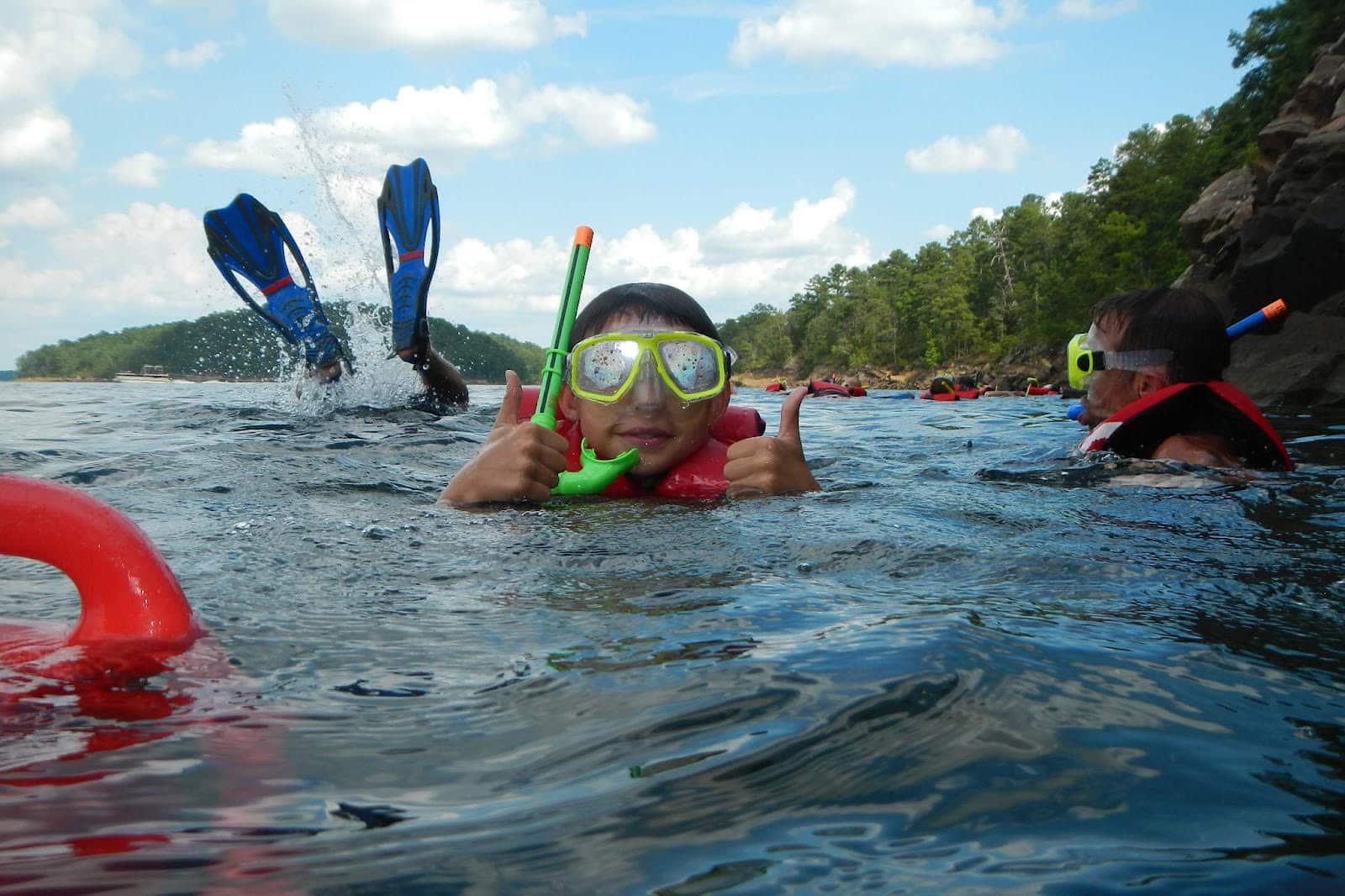
LITTLE ROCK — Strapping on a mask and snorkel may seem to many like the stuff of a tropical vacation with sandy beaches and coral reefs, but The Natural State hosts thousands of miles of rivers and streams and supports some of the most diverse fish, crayfish and mussel populations west of the Mississippi River.
So as heat and humidity continue to grip the state, consider checking out from life’s hectic pace and taking a dip in one of Arkansas’s cool, clear streams or reservoirs. Immerse yourself in a complex and enthralling world under the water’s surface.
Tools of the Trade
Equipment for freshwater snorkeling need not be complicated:
-
A well-fitting mask or goggles is the only true requirement. Insider tip: A little saliva smeared on the inside of the lens helps prevent fogging, or purchase a little bottle of defog such as SeaDrops.
-
The addition of a snorkel isn’t necessary, but allows a more leisurely and successful experience – floating motionless, face down in the water while breathing lets fish and other creatures go about their business, allowing the underwater world to unfold beneath you.
-
An old pair of tennis shoes works well to protect tender feet on rocky-bottomed streams. For lake explorers, upping the game with a pair of snorkel fins (shorter and lighter than scuba fins) facilitates an occasional dive in deep pools.
-
Floating on the water’s surface is a great way to get a heck of a sunburn – donning a long-sleeved quick-dry shirt is a game changer. If floating is a challenge, check into a snorkel vest. A U.S. Coast Guard life jacket is designed to keep your head above water while a snorkel vest offers customizable buoyancy while floating horizontally in the water.
-
For the cold-natured or those exploring cold-water streams, a wetsuit holds in body heat and adds buoyancy allowing a more pleasant experience.
-
A dry bag is a game changer for snorkeling and other water activities. Tuck essentials such as your phone, keys and wallet into the flexible, waterproof container for safekeeping.
Location, Location, Location.
Arkansas’s best bets for clean, clear water are streams and lakes with rocky bottoms, which are mainly in the Ozarks and Ouachitas. Late summer, when there’s been little rain, is an ideal time to go – sediment settles to the bottom of the stream, increasing visibility.
Walk along the bottom as little as possible to prevent stirring up dirt and debris. Ease into the water, swim slowly and stop frequently, exploring the different components of the habitat – calm pools, rocky riffles, submerged vegetation, and eddies or calm water created behind large rocks or logs. Different creatures lurk in the varied locales.
In central Arkansas, check out Cadron Creek along with the Saline River and its tributaries – the South, Alum, Middle and North forks. Western Arkansas offers the Little Missouri River, Caddo River, Cossatot River, Lake Ouachita and DeGray Lake. North Arkansas is chock full of snorkeling sites such as the Kings River, Buffalo River, Mulberry River, Illinois Bayou and Crooked Creek along with reservoirs such as Beaver Lake, Bull Shoals Lake and Norfork Lake.
Underwater Arkansas
Arkansas’s fish population is rich and diverse – 243 species ply the state’s waters. The smallest – the least darter – maxes out at 1.8 inches long while the largest – the alligator gar – can grow to 8 feet and reach 350 pounds.
For those who would like to take a deep dive – pun intended – in The Natural State’s fish population, “Fishes of Arkansas” is the tell-all book with robust information on the range, habitat and biology of the state’s fish. Seven of the state’s fish species are endemic and live nowhere else: Ouachita madtom, Caddo madtom, beaded darter, strawberry darter, paleback darter, and the Ouachita Darter.
Snorkelers will find more than just fish while exploring Arkansas’s watery habitats – amphibians, turtles, aquatic insects, crayfish, freshwater mussels, and snakes along with aquatic plants and rocks of all shapes and sizes.
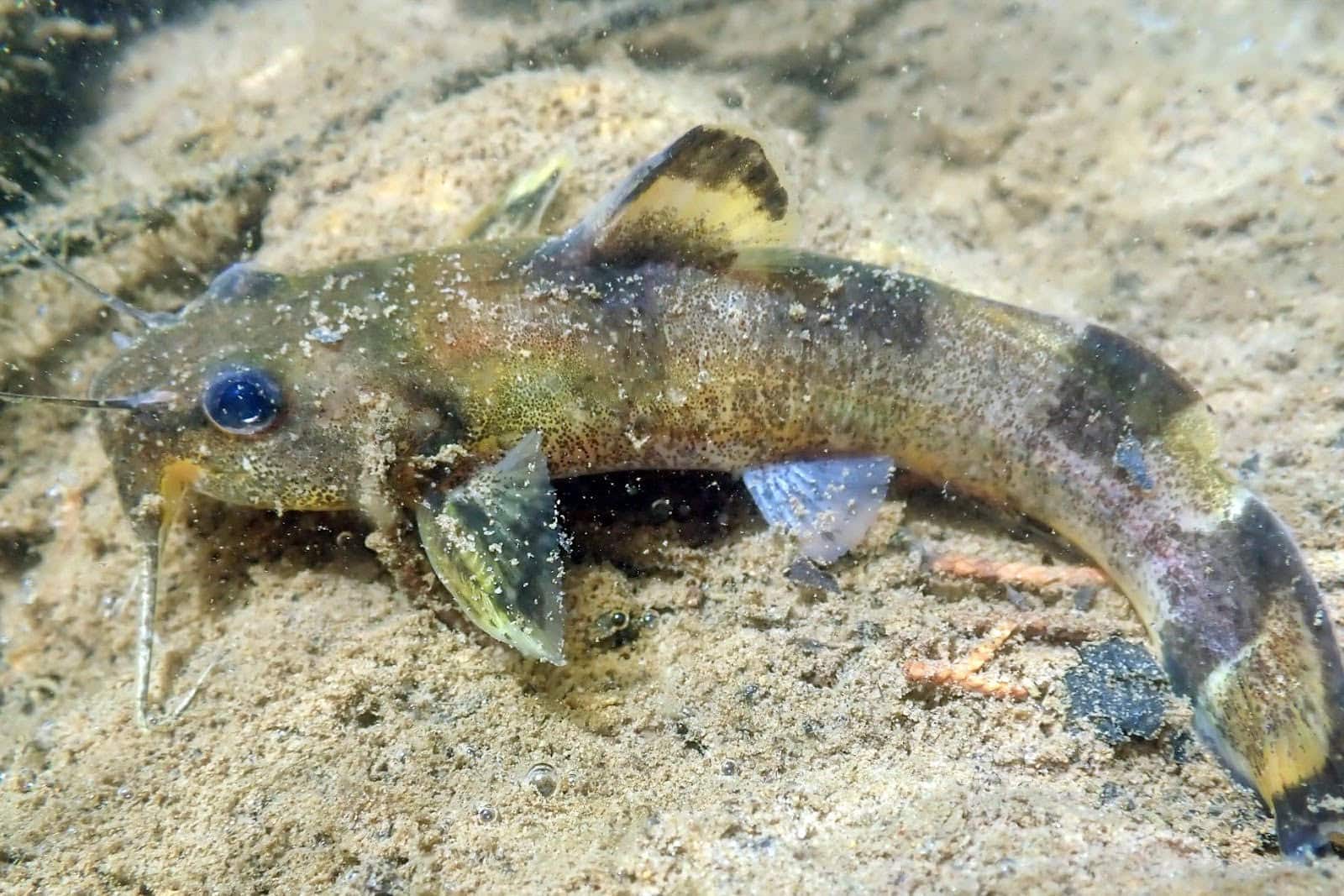
Checkered Madtom
Small, secretive madtoms – 13 species in Arkansas – hunt by night and lurk beneath cover during the day. Watch for the checkered madtom in Ozark streams and Lake Norfork and Bull Shoals Lake. Breeding males guard nests under large, flat rocks by blocking the entrance with their swollen head and lips. Photo by Dustin Lynch, Arkansas Natural Heritage Commission.
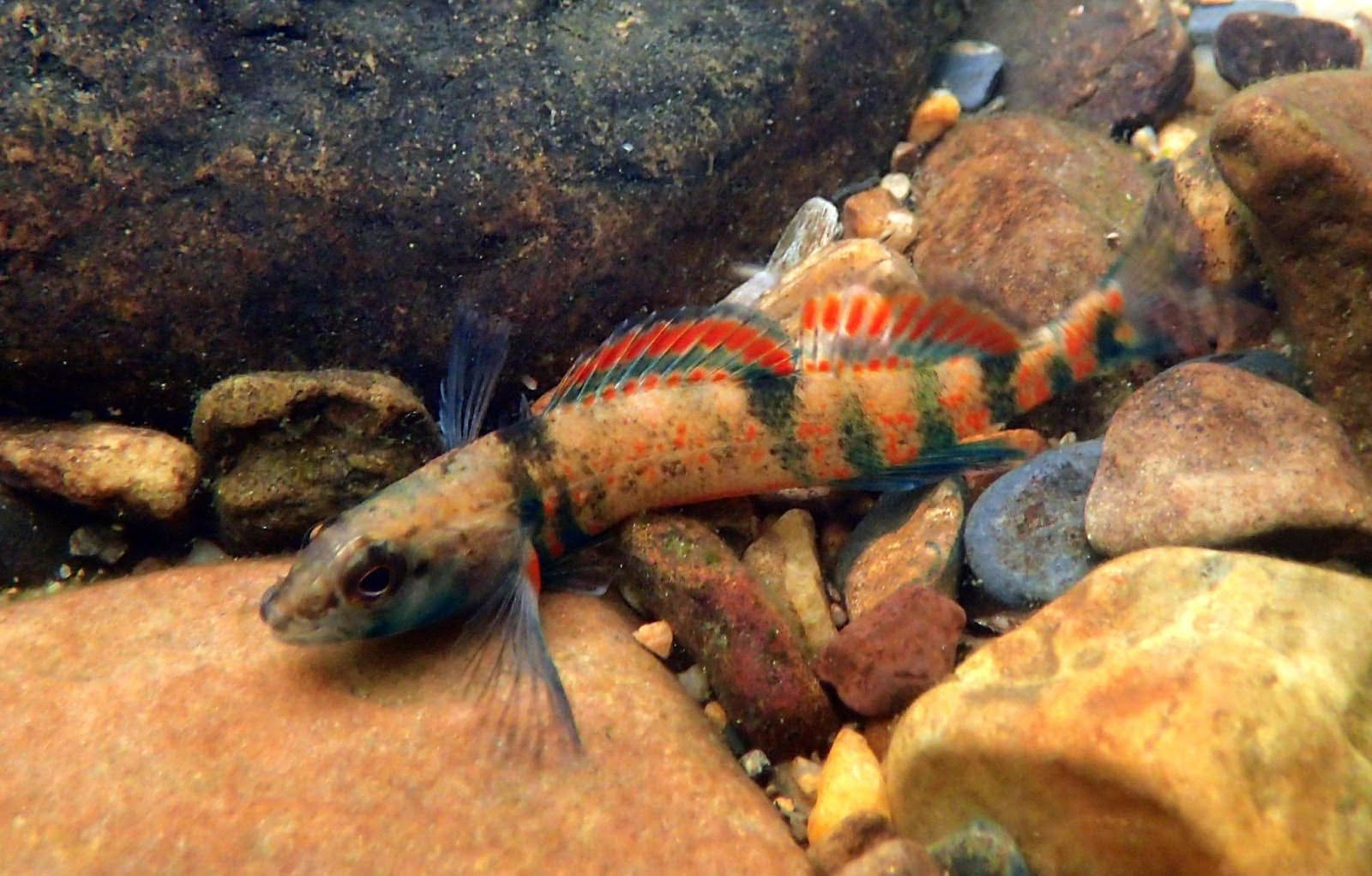
Creole Darter
Some of Arkansas’s showiest native fish are diminutive darters. One of the most beautiful of the 50 or so species found in Arkansas is the Creole darter, a common inhabitant of the Saline, Caddo, Ouachita and Little Missouri rivers. Creole darters feed on aquatic invertebrates and reach a maximum length of about 2½ inches. Photo by Dustin Lynch, Arkansas Natural Heritage Commission.
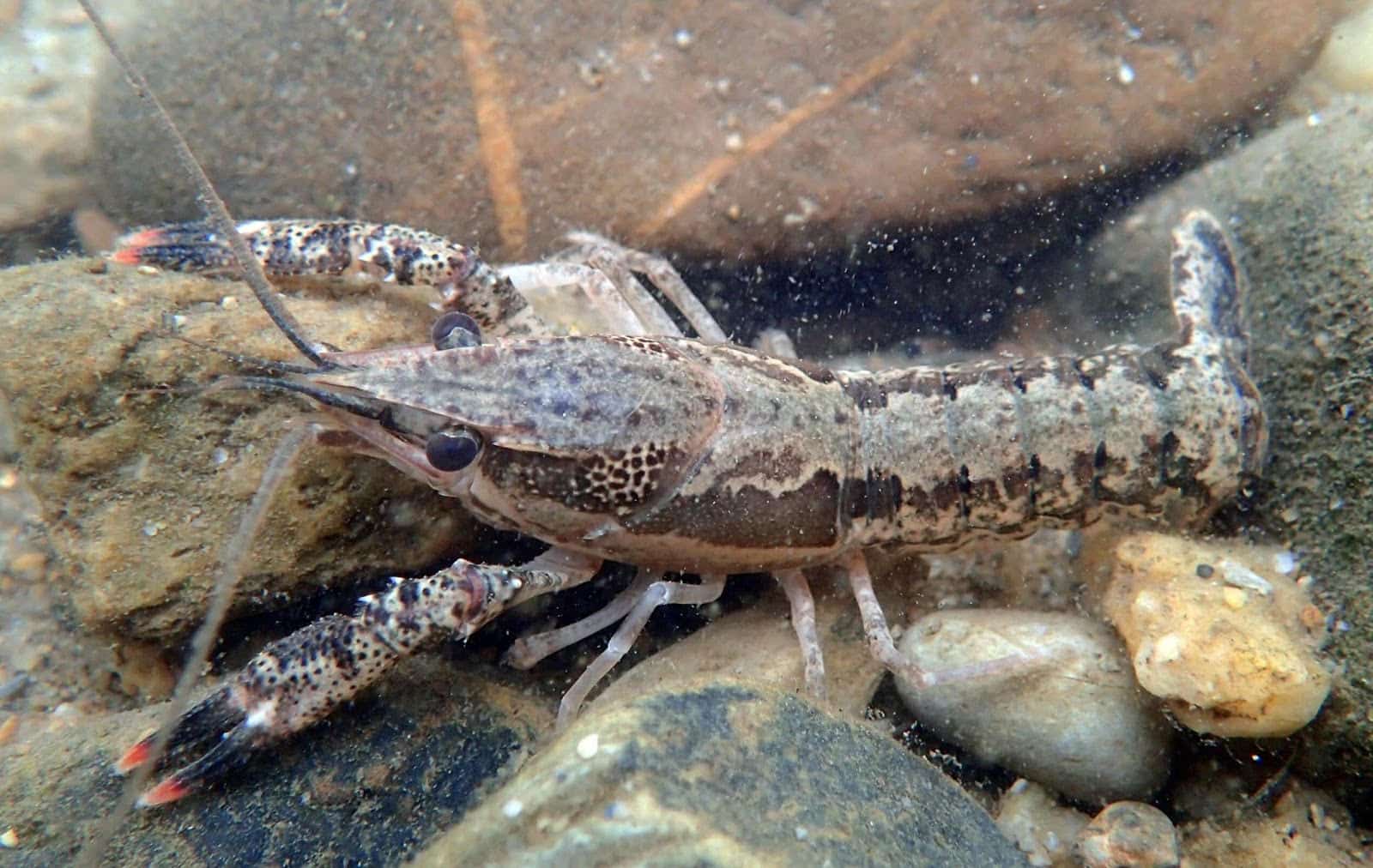
Ouachita River Crayfish
About 60 species of crayfish live in Arkansas, more than in any state west of the Mississippi River. One commonly encountered species in southern Arkansas, including the Saline River, is the strikingly patterned Ouachita River crayfish sporting striped sides and spotted claws with orange tips. Photo by Dustin Lynch, Arkansas Natural Heritage Commission.
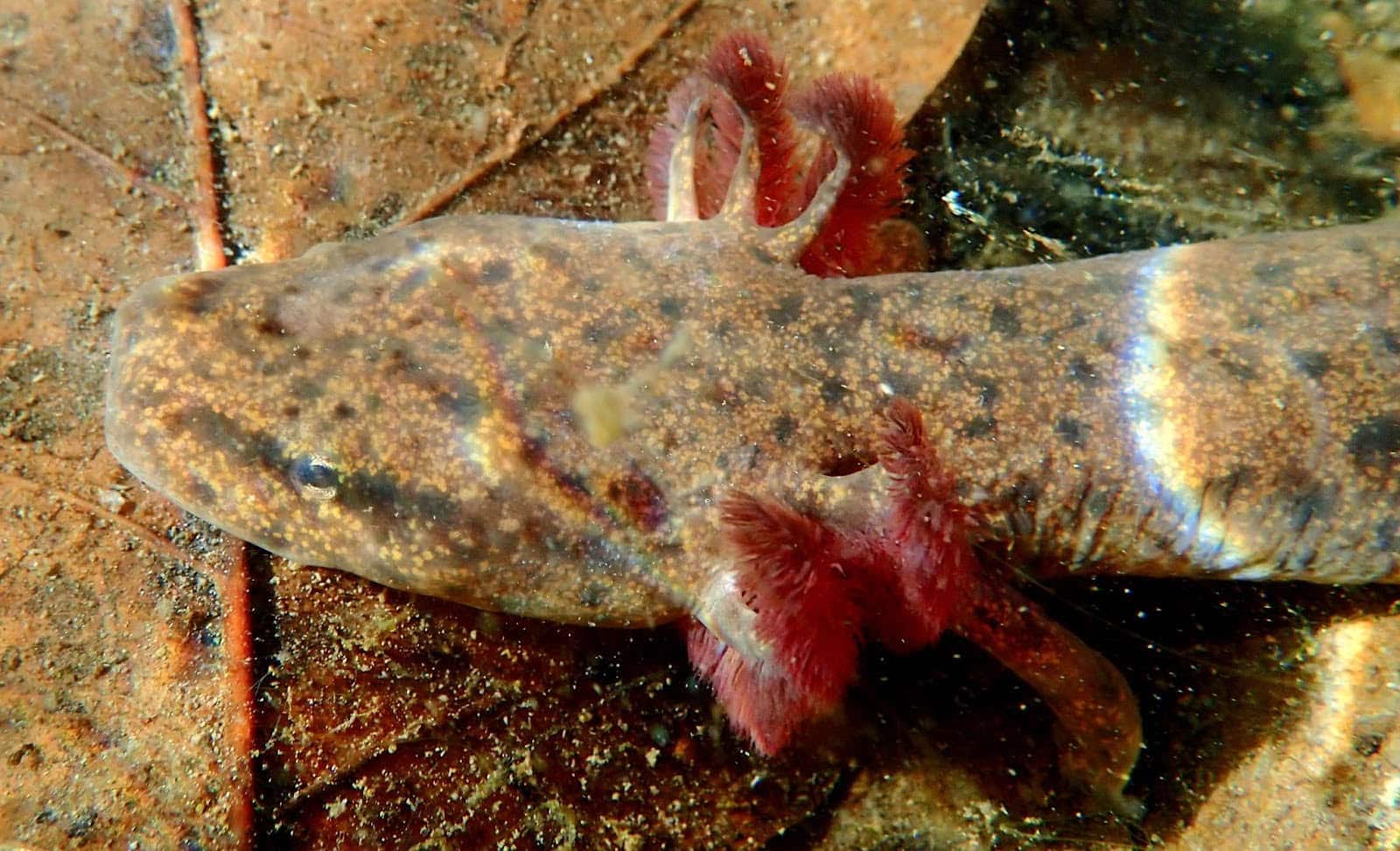
Red River Mudpuppy
This large, fully aquatic salamander forages at night for crayfish, mollusks, fish and other small animals. Mudpuppies nest in spring and summer; females guard the eggs until they hatch. Unlike many salamanders that transform from larvae in the water into adults on land, mudpuppies are aquatic their entire lives. Photo by Dustin Lynch, Arkansas Natural Heritage Commission.
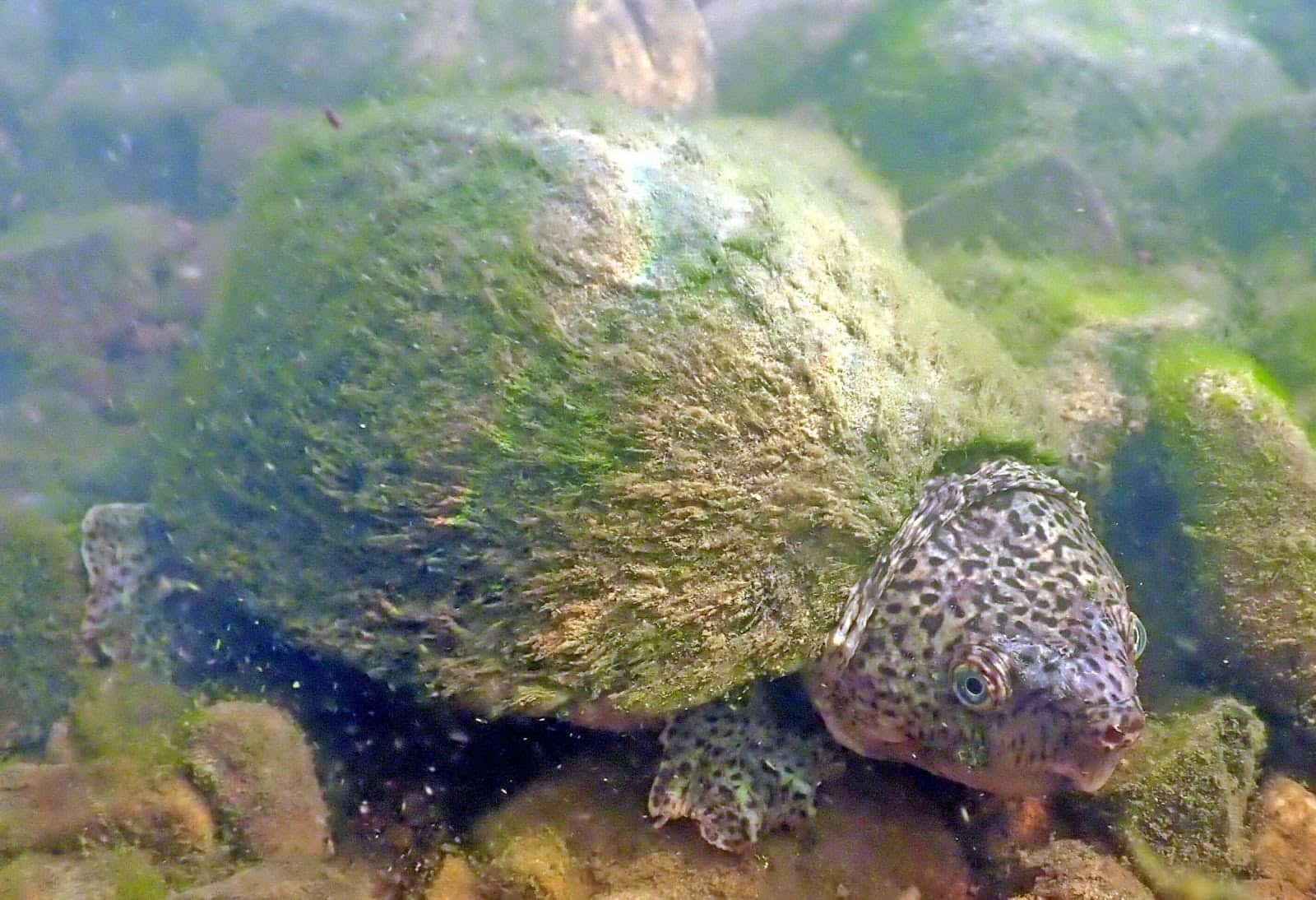
Razor-backed Musk Turtle
These turtles found in southern Arkansas seldom travel on land and spend most of their lives in creeks and rivers. The common name refers to the prominent keel in the middle of the shell. They feed on mollusks, crayfish, dead animals and vegetation. Photo by Dustin Lynch, Arkansas Natural Heritage Commission.
Get Involved
Arkansas boasts an abundance of water, from the mighty Mississippi to unnamed, ephemeral creeks that can be hopped across. These rivers, streams, bayous, creeks and springs provide drinking water, recreation, vital habitat for fish and wildlife, and water for irrigation and industry.
Human activities, such as damming streams and pollution, damage The Natural State’s waterways. Help turn the tide and get involved with AGFC’s Stream Habitat Program. Receive training in water-quality monitoring, riparian area management, fish and wildlife habitat improvements, best management practices and streambank maintenance and restoration techniques. Learn more: https://www.agfc.com/
Recent News
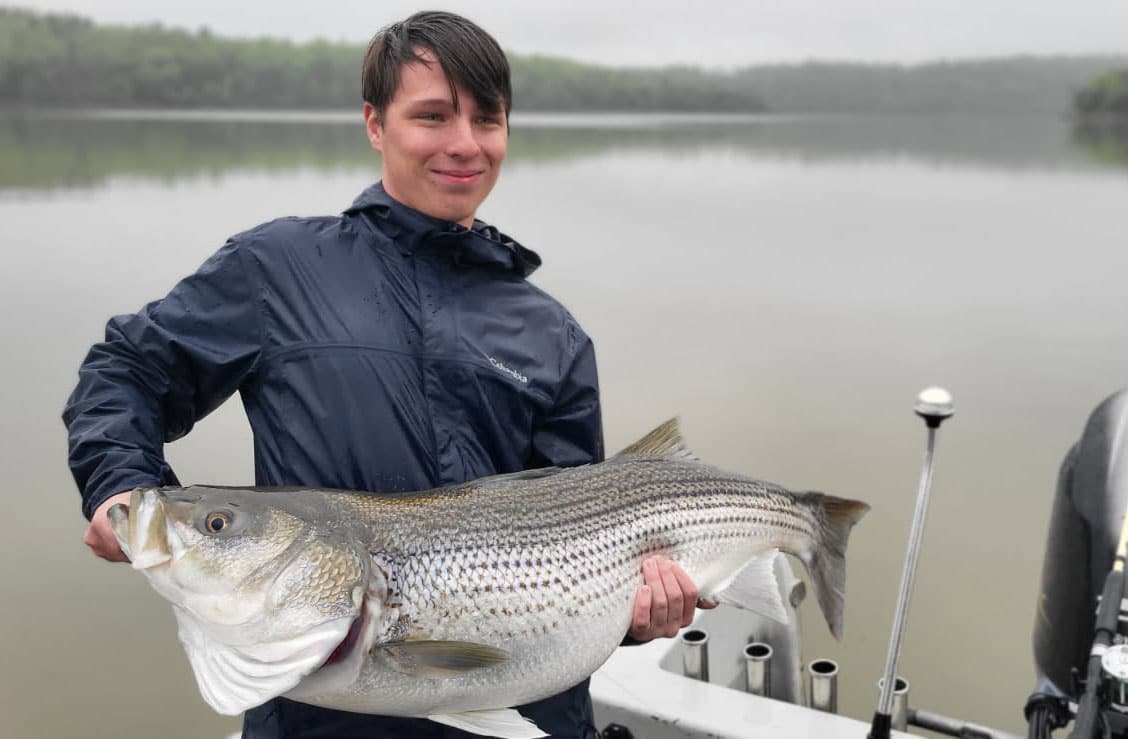
Arkansas Wildlife Weekly Fishing Report
Apr. 24, 2025

Contenders take aim as shooting sports regionals begin
Apr. 23, 2025
Subscribe to Our Weekly Newsletter E-mails
Don’t miss another issue. Sign up now to receive the AGFC Wildlife Weekly Newsletter in your mailbox every Wednesday afternoon (Waterfowl Reports are published weekly during waterfowl season and periodically outside the season). Fishing Reports arrive on Thursdays. Fill in the following fields and hit submit. Thanks, and welcome!
